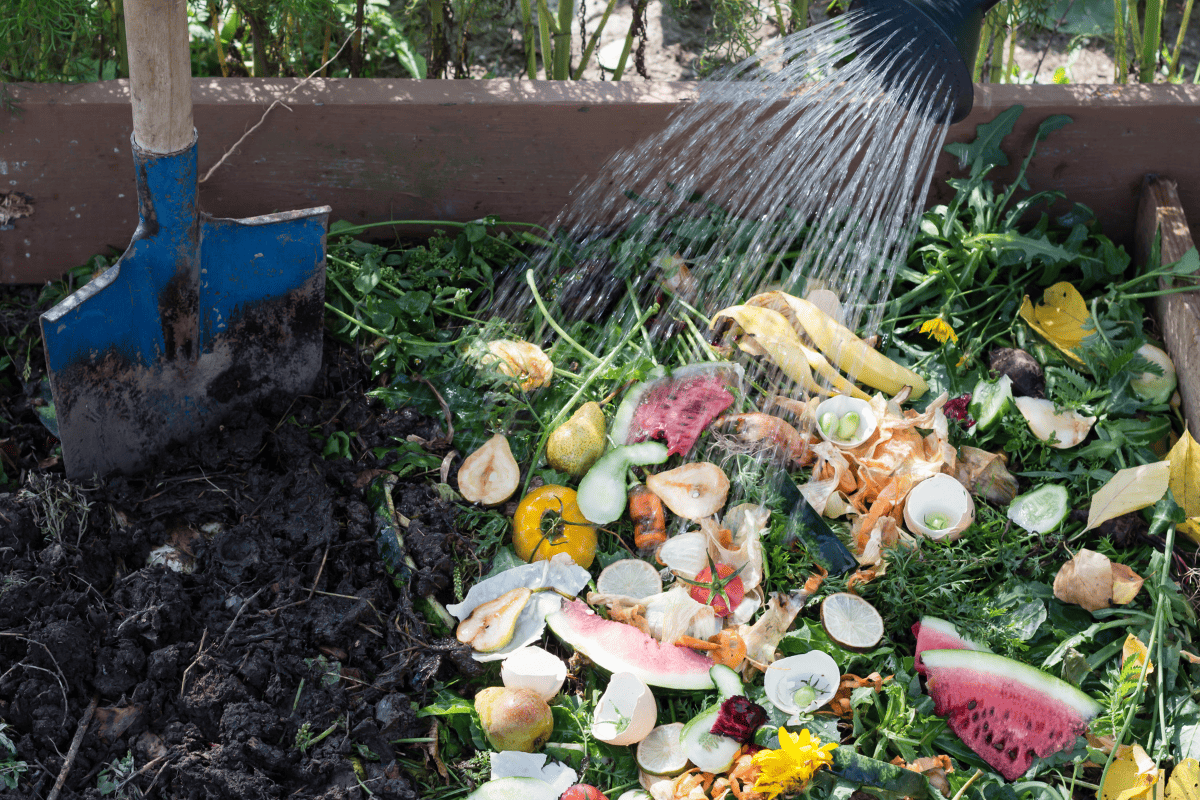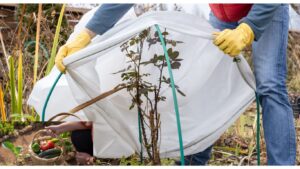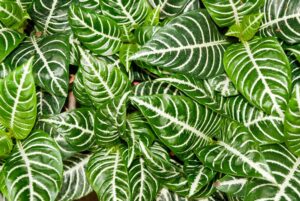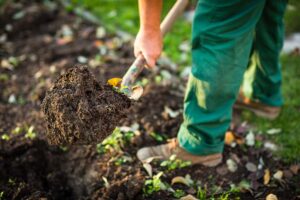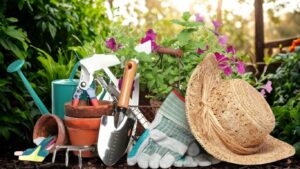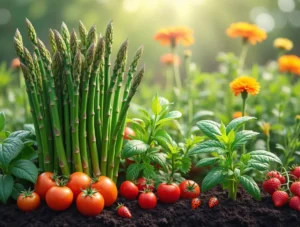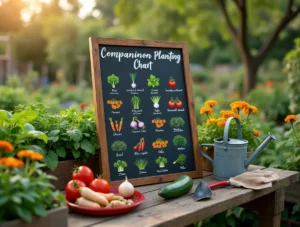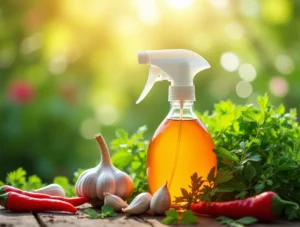Watering your organic garden properly is essential to ensure healthy plant growth and efficient resource use. Overwatering or underwatering can stress plants, leading to disease and poor yields. By adopting smart watering practices, you can maintain a thriving garden while conserving water.
Understanding Your Garden’s Water Needs
Different plants have different water requirements, and understanding these needs is key to effective watering. Factors such as soil type, weather conditions, and plant maturity also play significant roles.
- Soil Type: Soil type influences how much water your garden holds and how quickly it drains. For example, sandy soils drain quickly but hold little water, requiring more frequent watering. In contrast, clay soils retain water longer but are prone to poor drainage, which can lead to root rot if overwatered.
- Plant Type: Some plants, like leafy greens and cucumbers, have high water needs, while others, like Mediterranean herbs (e.g., rosemary, thyme), prefer drier conditions. Deep-rooted plants, such as tomatoes, can access moisture deeper in the soil and may require less frequent watering.
- Weather Conditions: Hot, dry, and windy weather increases water evaporation from both the soil and plant leaves, necessitating more frequent watering. Conversely, cool, humid conditions reduce the need for additional water.
Watering Methods: Choosing the Right Approach
Choosing the right watering method can make a big difference in the health of your plants and the efficiency of water use. Here are some common watering techniques and when to use them:
- Hand Watering: Hand watering with a hose or watering can is ideal for small gardens and container plants. It allows you to control the amount of water each plant receives and is particularly useful for young seedlings that need gentle watering.
- Soaker Hoses: Soaker hoses are porous hoses that release water slowly and directly to the soil, minimizing evaporation and delivering water directly to the root zone. They are perfect for garden beds and row crops, providing even, deep watering with minimal waste.
- Drip Irrigation: Drip irrigation systems deliver water through a network of tubes with emitters that release water slowly at the base of each plant. This method is highly efficient, reducing water waste and preventing leaf diseases caused by wet foliage. It’s especially useful in larger gardens or areas with limited water resources.
- Sprinklers: While sprinklers are convenient for watering large areas, they can be less efficient, leading to water loss through evaporation and uneven watering. They are best suited for lawns or garden areas where precision is less critical.
- Self-Watering Systems: For container gardens, self-watering pots or wicking systems can help maintain consistent moisture levels. These systems draw water from a reservoir as the soil dries, ensuring plants receive a steady supply of water.
When to Water: Timing Matters
The timing of watering is crucial for maximizing water efficiency and promoting healthy plant growth. Watering at the wrong time can lead to water loss and increased disease risk.
- Morning Watering: The best time to water your garden is in the early morning, ideally between 6 a.m. and 10 a.m. Watering in the morning allows plants to absorb moisture before the heat of the day causes evaporation. It also gives leaves time to dry before nightfall, reducing the risk of fungal diseases.
- Evening Watering: If morning watering isn’t possible, evening watering is the next best option, though it comes with some risks. Watering after 4 p.m. can be effective, but avoid wetting the foliage as it may stay damp overnight, increasing the risk of diseases like powdery mildew.
- Avoid Midday Watering: Watering during the hottest part of the day should be avoided if possible, as much of the water will evaporate before it reaches the roots. Additionally, wet leaves in direct sunlight can cause scorching.
Water Conservation Tips
Water is a precious resource, and conserving it is important, especially in regions prone to drought. Here are some tips to make the most of the water you use in your garden:
- Mulching: Applying a layer of organic mulch, such as straw, wood chips, or leaves, helps retain soil moisture by reducing evaporation. Mulch also suppresses weeds, which compete with plants for water, and improves soil structure over time as it decomposes.
- Water Deeply but Infrequently: Deep watering encourages plants to develop strong, deep root systems, making them more drought-tolerant. Instead of shallow, frequent watering, aim to water deeply, ensuring the moisture reaches the root zone. This method also reduces the frequency of watering.
- Use Rainwater: Harvesting rainwater with barrels or other catchment systems is an eco-friendly way to water your garden. Rainwater is naturally soft and free of the chemicals found in tap water, making it ideal for organic gardening. Position your rain barrels under downspouts for easy collection.
- Install a Drip Irrigation System: If you have a larger garden, consider installing a drip irrigation system. These systems are designed to deliver water directly to the base of plants, minimizing evaporation and ensuring that each plant gets the right amount of moisture.
Monitoring Soil Moisture
Consistently checking the moisture levels in your soil is key to preventing overwatering or underwatering.
- Finger Test: The simplest way to check soil moisture is by sticking your finger into the soil up to the second knuckle. If the soil feels dry at this depth, it’s time to water. If it’s still moist, hold off on watering.
- Soil Moisture Meters: For more precise measurements, use a soil moisture meter. These devices are inexpensive and give you an accurate reading of soil moisture levels, helping you determine when to water.
- Signs of Overwatering: Overwatered plants may show signs such as yellowing leaves, wilting, and root rot. If you notice these symptoms, reduce the frequency of watering and improve soil drainage.
- Signs of Underwatering: Underwatered plants often have dry, brittle leaves, and may droop or wilt. Ensure that the soil is consistently moist but not waterlogged, particularly during hot, dry weather.
Composting for a Thriving Organic Garden
Composting is one of the most effective and environmentally friendly ways to improve the health of your organic garden. By turning kitchen scraps, yard waste, and other organic materials into rich, fertile compost, you can enhance soil structure, boost nutrient levels, and promote healthy plant growth. In this section, we’ll dive deep into the art of composting, from choosing the right materials to troubleshooting common problems.
The Benefits of Composting
Composting offers numerous benefits for your garden and the environment:
- Enriches Soil: Compost improves soil structure by increasing its ability to retain moisture and nutrients. It also promotes the growth of beneficial microorganisms that help plants absorb nutrients more efficiently.
- Reduces Waste: By composting kitchen scraps and yard waste, you reduce the amount of material that ends up in landfills, thereby cutting down on methane emissions, a potent greenhouse gas.
- Encourages Healthy Plant Growth: The nutrients in compost are slowly released over time, providing a steady supply of essential elements like nitrogen, phosphorus, and potassium. This helps plants grow stronger and more resilient.
- Suppresses Plant Diseases: Compost can improve soil health, making plants more resistant to diseases and pests. The beneficial microbes in compost help suppress harmful pathogens in the soil.
- Cost-Effective: Composting reduces the need for chemical fertilizers and other soil amendments, saving you money in the long run.
Choosing the Right Composting Method
There are several composting methods to choose from, depending on your space, time, and materials available. Here are some of the most popular options:
- Traditional Composting: This method involves creating a compost pile or bin in your yard where organic materials are layered and allowed to decompose over several months. It’s a low-maintenance option suitable for those with a bit of outdoor space.
- Vermicomposting: Vermicomposting uses worms, specifically red wigglers, to break down organic matter quickly. It’s ideal for small spaces or indoor composting. Vermicomposting produces nutrient-rich worm castings that are excellent for garden use.
- Bokashi Composting: Bokashi is an anaerobic composting method that ferments organic waste using a specialized bran inoculated with beneficial microorganisms. This method is fast, odorless, and can handle a wider range of materials, including meat and dairy, which aren’t typically composted.
- Tumbler Composting: A compost tumbler is a sealed container that can be rotated to mix the compost. This method accelerates decomposition and is ideal for small gardens or urban settings where space is limited.
What to Compost: The Right Ingredients
Creating a successful compost pile starts with the right mix of materials. Composting requires a balance of “greens” and “browns” to break down efficiently.
- Greens (Nitrogen-Rich Materials): These materials are rich in nitrogen and include fruit and vegetable scraps, coffee grounds, grass clippings, and manure. Greens help to heat up the compost pile, speeding up the decomposition process.
- Browns (Carbon-Rich Materials): Browns provide carbon, which is essential for feeding the microorganisms that break down organic matter. Browns include dry leaves, straw, newspaper, cardboard, and small branches. They help to maintain the structure of the compost pile, allowing air to circulate.
- Water and Air: Both water and air are crucial for composting. Your pile should be as moist as a wrung-out sponge, and it needs oxygen to support aerobic decomposition. Regular turning helps to aerate the pile.
Materials to Avoid
While most organic materials can be composted, there are a few things you should avoid adding to your compost pile:
- Meat, Dairy, and Fats: These can attract pests and create unpleasant odors. They also take longer to break down.
- Diseased Plants: Composting diseased plants can spread pathogens in your garden.
- Weeds with Seeds: Some weeds can survive the composting process and reappear in your garden.
- Pet Waste: Dog and cat waste can contain harmful pathogens that aren’t killed during composting.
How to Build a Compost Pile
Building a compost pile is straightforward, but following a few key steps will ensure success:
- Choose a Location: Select a well-drained spot in your yard that’s easy to access. It’s best to place the compost pile or bin in a partially shaded area to maintain moisture levels.
- Layering: Start with a layer of coarse materials like straw or small branches to promote airflow at the bottom. Alternate layers of greens and browns, making each layer about 3-4 inches thick.
- Add Water: As you add each layer, moisten it with water to keep the pile damp but not soggy.
- Turn the Pile: Every few weeks, use a garden fork or shovel to turn the pile, mixing the materials and adding air. This helps to speed up the decomposition process and prevents odors.
- Monitor the Temperature: A well-functioning compost pile should heat up to 130-160°F (55-70°C) within a few days. If the pile is too cool, add more greens and turn it more frequently.
- Let It Cure: After several months, the compost should be dark, crumbly, and earthy-smelling. Allow the compost to cure for a few weeks before using it in your garden.
Troubleshooting Common Composting Problems
Even experienced gardeners encounter challenges when composting. Here are some common problems and how to solve them:
- Bad Odors: If your compost pile smells bad, it’s likely too wet or has too many greens. Add more browns to balance the mix and turn the pile to aerate it.
- Compost Is Too Dry: If the pile isn’t decomposing, it may be too dry. Add water and turn the pile to distribute moisture evenly.
- Slow Decomposition: If the compost isn’t breaking down, it could be due to a lack of nitrogen. Add more greens and turn the pile to introduce oxygen.
- Pests: If pests are a problem, avoid adding food scraps directly to the pile without covering them with a layer of browns. Consider using a closed bin to keep pests out.
Using Compost in Your Organic Garden
Once your compost is ready, it’s time to put it to use in your garden. Here’s how to maximize its benefits:
- Soil Amendment: Mix compost into your garden beds to improve soil structure, increase fertility, and boost water retention. Aim for a 2-3 inch layer of compost, tilled into the top 6-8 inches of soil.
- Mulch: Use compost as a mulch around plants to suppress weeds, retain moisture, and slowly feed the soil as it breaks down.
- Compost Tea: Create a nutrient-rich liquid fertilizer by steeping compost in water. Use it to water plants or as a foliar spray for a quick nutrient boost.
- Top Dressing: Spread a thin layer of compost over your lawn or garden beds to rejuvenate the soil and encourage healthy growth.
